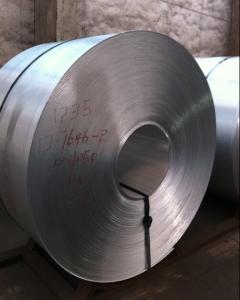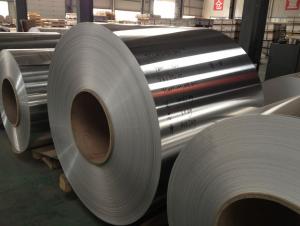POLISHED ALUMINIUM PLATES FOR MOLD PRODUCTION
- Loading Port:
- Shanghai
- Payment Terms:
- TT or LC
- Min Order Qty:
- 3 m.t.
- Supply Capability:
- 4000 m.t./month
OKorder Service Pledge
OKorder Financial Service
You Might Also Like
1.Structure of Product Description:Polished aluminium sheets 6061 for mold production
2. Our Strength:
a.Competitive price
b.Frist-Class Service.
c. Shortest service.
3. Image:

4. Common Specification
1000mm*2000mm, 1500*3000mm, etc.
5. FAQ:
What is the quality standard?
---Usually our standard is GB3880-2006 or others.
What is the width range?
---It is from 1000mm to 2500mm, etc.
What is the length range:
---It is from 2000mm to 6000mm, etc.
What is the MOQ for your products yet?
---Normally it is around 5 tons/each size.
What is your mainly products?
---Normally they are aluminum sheet, checkered sheet,
mirror finish aluminium sheet, aluminum casting coil, etc.
- Q:How do you prevent scratches during transportation of aluminum sheets?
- To minimize the occurrence of scratches when transporting aluminum sheets, there are several steps that can be taken: 1. Adequate packaging: It is important to securely package the aluminum sheets using suitable materials like bubble wrap, foam, or cardboard. This will offer cushioning and protection against external impacts. 2. Application of protective layers: Inserting paper or plastic film between individual sheets will prevent direct contact and minimize the risk of scratching. 3. Secure stacking: When loading the aluminum sheets onto transportation vehicles, ensure they are stacked securely to prevent any movement or shifting during transit. This can be achieved by using appropriate strapping or palletizing techniques. 4. Gentle handling: Properly train personnel involved in the transportation process to handle the aluminum sheets with care. They should avoid dragging or sliding them against rough surfaces that could cause scratches. 5. Avoid contact with sharp objects: Take measures to ensure that the aluminum sheets do not come into contact with sharp objects or edges. This can be accomplished by keeping them separate from other materials or using protective covers. 6. Regular inspections: Regularly inspect the aluminum sheets during transportation to identify any potential scratches or damages. If any are discovered, immediate action should be taken to prevent further harm. By implementing these preventive measures, the likelihood of scratches occurring during the transportation of aluminum sheets can be significantly reduced. This will ensure that the sheets are delivered in optimal condition to their destination.
- Q:What are the physical properties of aluminum?
- Some physical properties of aluminum include its silvery-white appearance, low density, high thermal conductivity, and good electrical conductivity. It has a melting point of 660.32°C (1220.58°F) and a boiling point of 2519°C (4566°F). Aluminum is also malleable, ductile, and highly corrosion resistant.
- Q:How do aluminum sheets perform in terms of thermal expansion and contraction?
- Aluminum sheets have a relatively high coefficient of thermal expansion, meaning they expand and contract more than most other materials when exposed to heat or cold. The coefficient of thermal expansion for aluminum is approximately 23 x 10^-6 per degree Celsius. This means that for every degree Celsius increase in temperature, aluminum will expand by 23 millionths of its size. This thermal expansion and contraction property of aluminum makes it suitable for various applications where temperature fluctuations are expected. For instance, in the construction industry, aluminum sheets are commonly used for roofing and cladding purposes. These sheets can withstand the thermal stresses caused by the changing temperatures without warping or distorting significantly. Moreover, this characteristic of aluminum also makes it ideal for manufacturing products like cookware and heat sinks. Aluminum cookware heats up quickly and evenly due to its high thermal conductivity and expands uniformly, preventing warping or deformation when exposed to heat. Similarly, aluminum heat sinks effectively dissipate heat generated by electronic components, as they can accommodate thermal expansion without compromising their structural integrity. However, it is important to note that while aluminum sheets have good thermal expansion and contraction properties, extreme temperature changes can still lead to some dimensional changes. Therefore, proper consideration of the anticipated temperature variations is crucial when designing and using aluminum sheets to ensure their optimal performance and longevity.
- Q:will it influence powder injection effect after wiping the oil contamination on the surface of aluminum sheet?
- no, but I'm not certain.
- Q:Are aluminum sheets suitable for electrical transformers?
- Yes, aluminum sheets are suitable for electrical transformers. Aluminum is a highly conductive material that offers several advantages for use in transformers. Firstly, it has a lower electrical resistance compared to other materials like copper, which means it can efficiently transfer electrical energy. This results in lower energy losses and better overall performance. Additionally, aluminum is lightweight, making it easier to handle and install. It is also more cost-effective than copper, making it a preferred choice for large-scale transformer applications. Overall, aluminum sheets provide a reliable and efficient solution for electrical transformers.
- Q:What are the different bending techniques for aluminum sheets?
- Aluminum sheets can be bent using various techniques. Some commonly used techniques include: 1. Air bending: By applying force with a punch, the sheet bends in a straight line. The degree of bending depends on the force exerted. 2. Bottom bending: In this method, the sheet is clamped between a bottom tool and a die. A punch is then used to apply force from the top, resulting in a precise and consistent bend angle. 3. Coining: This technique involves bending the sheet with a punch and die, but with significantly higher force compared to other methods. The result is a crisp and sharp bend with minimal springback. 4. Rotary bending: The sheet is gradually bent around a rotating bending roll, which applies pressure to achieve a smooth bend. 5. Roll bending: Large sheets or cylindrical shapes are formed by passing the aluminum sheet through a series of rollers that gradually bend it to the desired shape. 6. Press braking: A versatile technique that utilizes a press brake machine consisting of a punch, die, and back gauge. This allows for precise and repeatable bends. Each technique has its own advantages and limitations, and the choice depends on factors like the desired bend angle, sheet thickness, and final product shape. It is crucial to select the appropriate technique to achieve the desired result and prevent any defects or damage to the aluminum sheet.
- Q:Do 101 aluminum sheets have any specific anti-corrosion properties?
- Yes, 101 aluminum sheets possess specific anti-corrosion properties. This aluminum alloy contains a small amount of iron and silicon, which enhances its resistance to corrosion. Additionally, the formation of a protective oxide layer on the surface of 101 aluminum sheets provides extra protection against corrosion.
- Q:What is the typical fatigue strength of aluminum sheets?
- Aluminum sheets have the potential to vary in their typical fatigue strength due to factors such as alloy composition, thickness, manufacturing process, and surface treatment. However, when compared to other materials, aluminum sheets generally exhibit a relatively high fatigue strength. Aluminum alloys, particularly those utilized in aerospace and automotive applications, are renowned for their exceptional resistance to fatigue. The fatigue strength of aluminum sheets is commonly measured in terms of the stress level (in MPa) at which failure occurs after a specific number of cycles. For aluminum alloys commonly employed in structural applications, fatigue strength typically falls within the range of approximately 70 MPa to 150 MPa, contingent upon the specific alloy and thickness. It is important to acknowledge, however, that this range is not absolute and can exhibit significant variations based on the aforementioned factors. It is noteworthy that the fatigue strength of aluminum sheets can be considerably enhanced through various techniques such as heat treatment, alloying, and surface treatments like shot peening or anodizing. These processes have the ability to augment the fatigue life and enhance the overall performance of aluminum sheets under cyclic loading conditions. In conclusion, while the typical fatigue strength of aluminum sheets can be considered relatively high compared to other materials, it is subject to variation due to several factors. Optimal material selection, in conjunction with appropriate processing and surface treatments, can result in significant improvements to the fatigue performance of aluminum sheets.
- Q:Can the aluminum sheets be used for manufacturing electrical conductors?
- Yes, aluminum sheets can be used for manufacturing electrical conductors. Aluminum is a highly conductive metal, second only to copper in terms of electrical conductivity. It is widely used in various electrical applications, including power transmission lines, electrical cables, and wiring. Aluminum sheets can be rolled or extruded into different shapes and sizes to suit specific conductor requirements. Additionally, aluminum is lightweight, corrosion-resistant, and cost-effective compared to other conductive materials, making it a popular choice for electrical conductor manufacturing.
- Q:Can aluminum sheets be anodized with custom colors?
- Custom colors can indeed be applied to aluminum sheets through the process of anodizing. Anodizing involves the application of an electrochemical procedure that adds a protective oxide layer to the aluminum's surface, thereby enhancing its durability and resistance to corrosion. In this process, the aluminum sheet is submerged in an electrolytic solution while an electrical current is passed through it. This induces a controlled oxidation of the aluminum's surface, leading to the formation of a porous layer that can be colored with dyes to achieve desired shades and hues. By carefully selecting the appropriate dye, a wide array of custom color options can be achieved. Moreover, anodized aluminum sheets offer versatility as they can undergo additional treatments like laser engraving or printing to create distinctive designs and patterns. Therefore, they are highly suitable for a diverse range of applications in industries such as architecture, automotive, and electronics.
1. Manufacturer Overview |
|
|---|---|
| Location | |
| Year Established | |
| Annual Output Value | |
| Main Markets | |
| Company Certifications | |
2. Manufacturer Certificates |
|
|---|---|
| a) Certification Name | |
| Range | |
| Reference | |
| Validity Period | |
3. Manufacturer Capability |
|
|---|---|
| a)Trade Capacity | |
| Nearest Port | |
| Export Percentage | |
| No.of Employees in Trade Department | |
| Language Spoken: | |
| b)Factory Information | |
| Factory Size: | |
| No. of Production Lines | |
| Contract Manufacturing | |
| Product Price Range | |
Send your message to us
POLISHED ALUMINIUM PLATES FOR MOLD PRODUCTION
- Loading Port:
- Shanghai
- Payment Terms:
- TT or LC
- Min Order Qty:
- 3 m.t.
- Supply Capability:
- 4000 m.t./month
OKorder Service Pledge
OKorder Financial Service
Similar products
New products
Hot products
Hot Searches
Related keywords





























